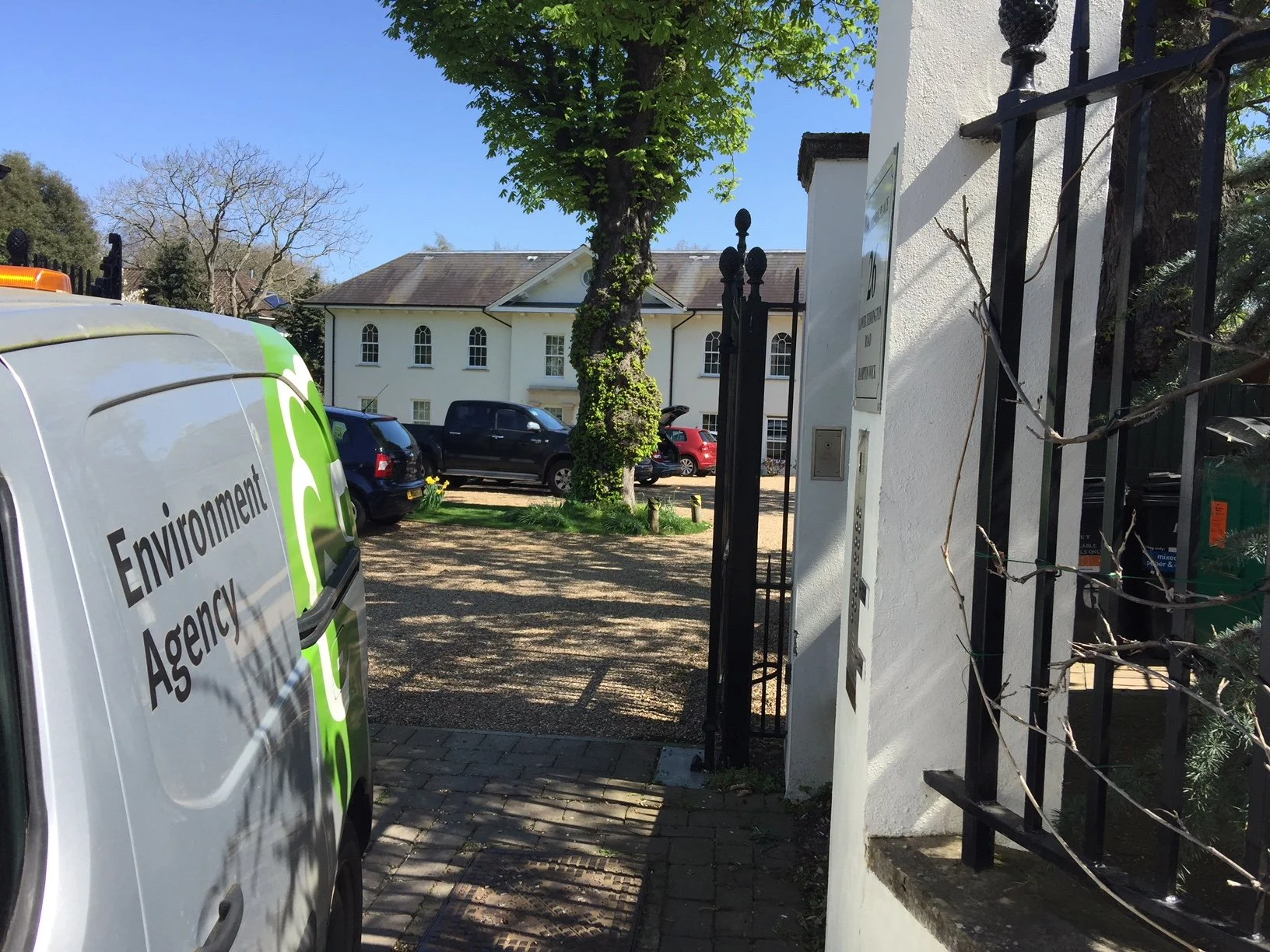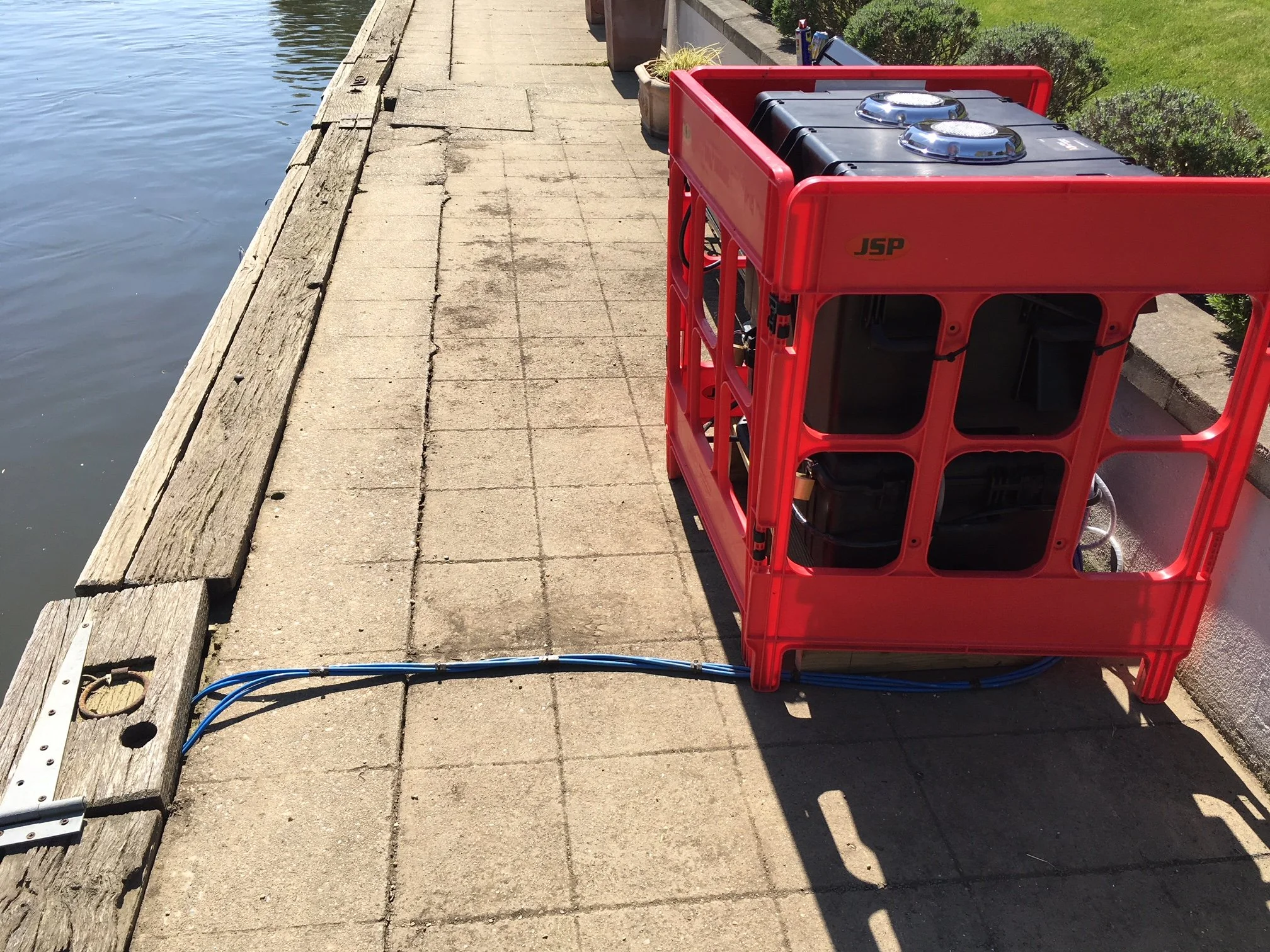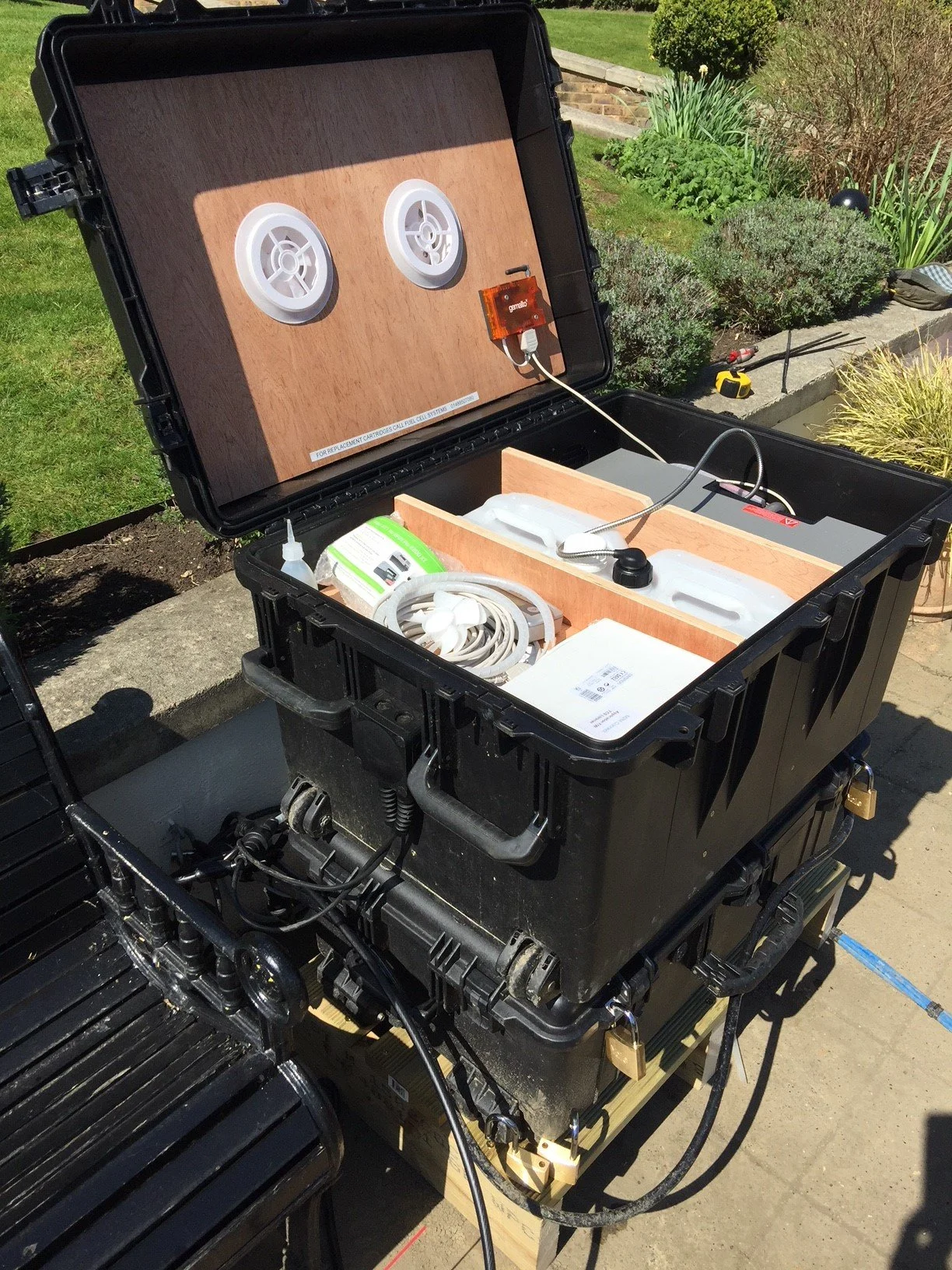Portable, off-grid power for flood warning equipment on the Thames
One of the many roles of the Environment Agency (EA) across the country is to monitor water levels on UK rivers, ensuring effective and timely flood warnings are given. This is achieved using specialized telemetry equipment, which requires a reliable source of power.
The Problem
One of the existing flow monitoring sites at Kingston upon Thames was due to be refurbished. The upgrade would take six months, during which time the Hydrometry and Telemetry team from the Thames region still needed to provide a flood warning service. The original site had access to mains power, but this would not be available during the refurbishment.
The Requirement
The Environment Agency decided to site the telemetry equipment in a temporary location on the other side of the Thames during the refurbishment. Along with Nivus, the EA installed the required equipment - a NivuFlow 750 and an EA ATU 800 on GSM. The combined power requirement for this system is 30 watts.
The Environment Agency looked at the possibility of using solar panels to power the equipment, but also had experience of using fuel cells successfully for other similar installations.
Chris Barber from EA Hydrometry and Telemetry team for Kent and South London explained “We have two other fuel cell installations running. One is a stand-alone unit powering a flood warning site at Haxted Mill in West Kent, which has been in place since June 2017 with a runtime of around 220 hours. The other is a solar hybrid system for a flood alleviation scheme in East Kent which has been running since December 2015, with roughly 2300 hours.” Both these systems have proved reliable and effective.
The Solution
The Environment Agency decided to run everything from an EFOY Pro fuel cell supplied by Fuel Cell Systems and installed inside a large weather proof Pelicase.
Chris Barber added, “Fuel cells can be an ideal solution for powering most types of EA Hydrometry equipment. The EFOY Pro’s ability to run in either 12 or 24VDC and its all-weather capability (down to below -20C) makes it a very useful tool. With the right type of housing the Pro can be deployed anywhere that monitoring is required.”



